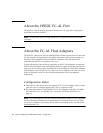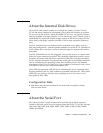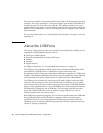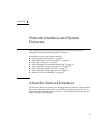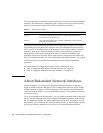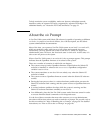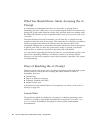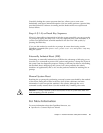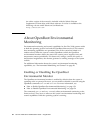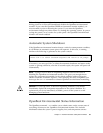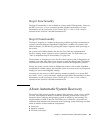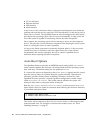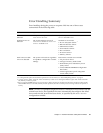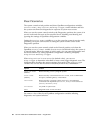
Chapter 4 Network Interfaces and System Firmware 51
Gracefully halting the system prevents data loss, allows you to warn users
beforehand, and causes minimal disruption. You can usually perform a graceful halt,
provided Solaris OS software is running and the hardware has not experienced
serious failure.
Stop-A (L1-A) or Break Key Sequence
When it is impossible or impractical to halt the system gracefully, you can get to the
ok prompt by typing the Stop-A (or L1-A) key sequence from a Sun keyboard, or, if
you have an alphanumeric terminal attached to the Sun Fire V490 system, by
pressing the Break key.
If you use this method to reach the ok prompt, be aware that issuing certain
OpenBoot commands (like probe-scsi, probe-scsi-all, and probe-ide) may
hang the system.
Externally Initiated Reset (XIR)
Generating an externally initiated reset (XIR) has the advantage of allowing you to
issue the sync command to preserve file systems and produce a dump file of part of
the system state for diagnostic purposes. Forcing an XIR may be effective in breaking
the deadlock that is hanging up the system, but it also precludes the orderly
shutdown of applications, and so it is not the preferred method of reaching the ok
prompt.
Manual System Reset
Reaching the ok prompt by performing a manual system reset should be the method
of last resort. Doing this results in the loss of all system coherence and state
information. It also corrupts the machine’s file systems, although the fsck
command usually restores them. Use this method only if nothing else works.
Caution – Forcing a manual system reset results in loss of system state data and
risks corrupting your file systems.
For More Information
For more information about the OpenBoot firmware, see:
■ OpenBoot 4.x Command Reference Manual




